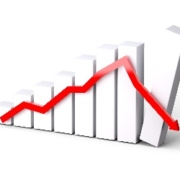4 Hedges for the Systemic Oil Problem
The plunge in oil prices has been a big scare for the markets, particularly since early December. As of this writing (Jan. 8), the cost of a barrel of Brent crude oil had fallen below $50, a key support line that could lead to accelerated selling from spooked traders. The selling in the oil patch has been the driving force behind the selling in stocks at the very tail end of 2014, and through the first few trading days of 2015. And while the bulls have managed to perk back up over the past couple of sessions, the fear of a continued oil slick that takes down the value of many risk assets remains at the forefront of nearly every perceptive investor’s mind.
Subscribers to The 7:00’s Report will recall that in early December, we gave specific recommendations for traders and investors looking to hedge those falling oil prices. The rational then was that if oil continues to collapse (and it has) then we could cause what I called “systemic stress” in the markets.
During the acute plunge in oil prices from Dec. 3 to Dec. 16, stocks also plunged, with the S&P 500 sinking nearly 5%. However, the combined performance of the four hedges that we recommended during this same time period (equally weighted) produced a stellar 6.9% return.
Now, I must go on record as saying that despite the plunge in oil prices over the past several months, I do not think we are about to see an oil inspired collapse in stocks (trading during the latter part of this week buttress that theory). I do, however, think that if you harbor the justifiable concern that oil prices will continue to fall, and that this will bring out more bears out of hibernation, then the following four hedges will keep your money safe from the systemic oil problem.
Hedge #1: ProShares Short MSCI Emerging Mark (ETF) (EUM)
We have recommended the ProShares Short MSCI Emerging Mark (ETF) (EUM) to readers for a few months now because we continue to believe that if we see systemic stresses begin to appear, they will hit emerging markets exceptionally hard, and very early. That’s because emerging markets have been some of the biggest beneficiaries of this multi-year stretch for yield, and the region has some of the most mispriced bonds on the planet. A drop in EM currencies and bonds will result in a drop in EM stocks, and that means holding EUM will allow your portfolio to rise, as this fund is inversely correlated to the benchmark MSCI Emerging Markets Index.
Hedge #2: ProShares Short High Yield (SJB)
Junk bonds are the canary in the coal mine for risk assets, and as such they tend to fall hard and fast with any type of systemic risk, including the risk of plunging oil prices. Taking advantage of a collapsing junk bond market is the ProShares Short High Yield (SJB), a fund designed to deliver the inverse of the high yield corporate bond index. The only problem with SJB is that, from a volume standpoint, it’s a trade-by-appointment fund (meaning it only trades around 30K shares per day). To combat this liquidity issue you can also short the SPDR Barclays Capital High Yield Bnd ETF (JNK) or the iShares iBoxx $ High Yid Corp Bond (ETF) (HYG).
Hedge #3: ProShares UltraShort Oil & Gas (DUG)
If oil keeps going down, then you’ll want to own an inverse oil fund that’s pegged to both the oil and gas services stocks. That’s simple enough, but why not own one that has a little leverage, and that delivers twice the inverse of oil prices? That’s what you get with the ProShares UltraShort Oil & Gas (DUG). Now, because of the leverage, this fund is a trading vehicle only, and should not be used for medium- or long-term holders. Yet for a properly timed flyer on falling oil prices, DUG can be a superstar.
Hedge #4: WisdomTree Europe Hedged Equity ETF (HEDJ)
I originally suggested this hedge as part of a “Long HEDJ/short SPX” pair trade based on the idea that the WisdomTree Europe Hedged Equity ETF (HEDJ) doesn’t have any energy exposure, and that energy stocks would weigh primarily on US equity indices such as the S&P 500. Due to fears of a Greek exit, or “Grexit” from the EU, this trade hasn’t really worked too well as an outright hedge. However, he logic behind this hedge still applies, and if the geopolitical issue of Greece and the EU are resolved, look to put this hedge back on for systemic oil risk.





